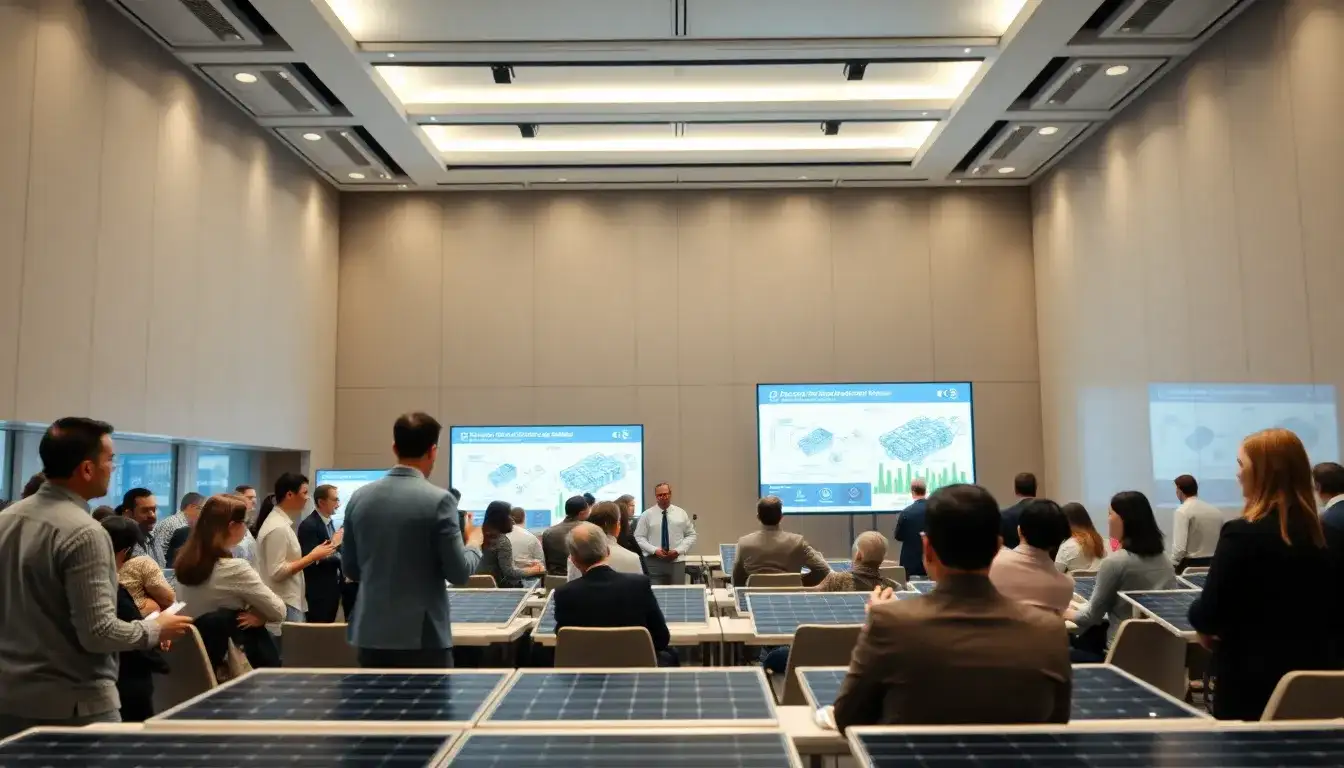
Promoting High-Quality Development! The Successful Conclusion of the 2025 Intelligent Photovoltaic Design Seminar
On March 27, the “2025 Intelligent Photovoltaic Design Seminar,” hosted by Huawei Digital Energy, was successfully held in Dongguan. This year marks the eleventh anniversary of the Huawei Intelligent Photovoltaic Design Seminar, which serves as a vital platform for design exchanges in the photovoltaic (PV) and energy storage sectors. The seminar brought together leaders and experts from various design institutes and industry peers to explore new design concepts and the application of innovative technologies, fostering technological exchange and knowledge sharing to promote high-quality development in the photovoltaic industry.
Driving High-Quality Development through Technological Innovation
Scientific design is key to advanced productivity. As the transition to a green and low-carbon economy continues, the policies for renewable energy consumption and regulation are becoming more refined. Fang Liangzhou, Vice President and Chief Marketing Officer of Huawei Digital Energy, stated in his speech, “In 2024, while the renewable energy sector continues to grow rapidly, it also faces numerous challenges, such as the high proportion of renewable energy, storage safety, and the exponentially increasing operational difficulty of photovoltaic power plants. To tackle these challenges, we must focus on three primary areas. First, we need to adopt networked storage solutions to increase renewable energy consumption. Second, we should consider storage safety from an end-to-end perspective, including design, selection, production, manufacturing, testing, and delivery. Third, we must leverage digital and intelligent technologies to comprehensively upgrade the operational management of photovoltaic systems.”
Emphasizing the Importance of Energy Transformation
As 2025 marks the conclusion of the 14th Five-Year Plan, the government has introduced a series of guiding policies aimed at promoting high-quality energy development and robust safety measures. Shi Jingli, a researcher at the Energy Research Institute of the Chinese Academy of Macro-Economic Research, noted that the national direction towards achieving peak carbon emissions and carbon neutrality remains consistent, driving the transformation of energy and the establishment of a new power system. The increasing demand for energy and electricity places higher demands on the development of renewable energy, necessitating a systemic transformation that supports the gradual increase of renewable energy’s share in the energy mix.
Addressing Structural Challenges in the Power System
Xin Yaozhong, Chairman of the Industrial Control System Industry Alliance and Chief Expert of the China Electricity Council, emphasized that the current power system faces five structural challenges: power source structure, grid structure, load structure, cybersecurity, and operational control. The grid is gradually transitioning from digital automation to intelligence, highlighting the growing importance of strengthening the electrical monitoring and safety protection system. To address various operational challenges within the power system, it is crucial to establish a robust power system security defense framework, supporting proactive voltage support methods represented by networked storage, while also enhancing the voltage tolerance of renewable energy sources.
Innovations in Microgrid Design
Zhang Xingzhong, President of Huawei Digital Energy’s Intelligent Photovoltaic Business, stressed that “the era of wind and solar energy storage is fully upon us, with storage and networks becoming ubiquitous.” Huawei’s intelligent photovoltaic solutions focus on creating a new smart wind-solar-storage generator solution that emphasizes lifecycle economics, comprehensive network construction, all-architecture safety, and full-link intelligence, thus continuously generating value for customers through ongoing technological innovation.
Exploring Multi-Scenario Application Innovations
The “2025 Energy Work Guiding Opinion” issued by the National Energy Administration clearly states the need to advance the construction of the “Shage Desert” base, with a planned total capacity of 455 million kilowatts by 2030. Facing the natural conditions and equipment reliability challenges during the construction of wind and photovoltaic projects in the Shage Desert, Ding Yu, Chief Engineer of the Northwest Electric Power Design Institute of China Energy Construction, shared design experiences. He highlighted the necessity for breakthroughs in planning and design (including equipment selection), engineering construction, and operational maintenance, emphasizing that inverter selection should focus on “high protection, intelligence, and low maintenance” to ensure reliable power station operation.
Currently, the scale of domestic offshore photovoltaic projects under construction has reached 10 million kilowatts, with expectations to exceed 40 million kilowatts by 2027. Offshore photovoltaics will become a primary battlefield for future development. Tian Weihui, Director of the Civil Engineering Institute of the New Energy Engineering Institute at China Electric Power Construction, noted that while opportunities and challenges coexist in offshore photovoltaic projects, the design process must comprehensively consider system reliability under complex environmental factors such as waves and corrosion, continuously exploring technical innovations and accumulating construction experience to enhance the industry standard system.
The Future of Energy and the Role of Digitalization
Li Jing, Smart Photovoltaic Technology Director at the Southwest Institute of China Energy Construction, stated that through technical accumulation and the establishment of a product ecosystem, they are building a digital station 4.0 system focused on four core objectives: centralized monitoring, intelligent collaboration, unmanned operation, and minimal staffing. This includes a platform system ecosystem for nine business applications such as digital twins, intelligent operations, fault warning/prediction, smart inspections, trading decisions, and safety management.
Over the past decade, Huawei has driven the transition from low-cost to high-value in the industry by innovatively integrating digital technology and power electronics, leading the smart string inverter to become the global mainstream. Looking ahead, Huawei will continue to collaborate closely with customers, partners, design institutes, and other stakeholders in the industry chain to contribute to the high-quality development of the energy sector and actively support the goal of carbon neutrality.







